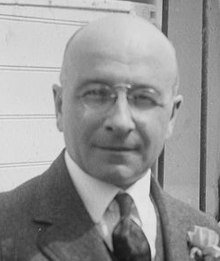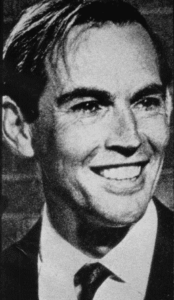Heart Transplant Evolution: From Pioneers to Modern Miracles
Heart Transplant Evolution: Over centuries, the heart has symbolized the essence of human emotion and vitality. However, with the dawn of medical science, our understanding of this vital organ has evolved significantly. While once considered the locus of spirituality and sentiment, we now comprehend the heart’s intricate role in sustaining life through its rhythmic beating and circulation of blood. Despite its resilience, the heart, like any organ, is susceptible to failure, often necessitating interventions beyond conventional medical treatment.

In this context, the evolution of heart transplantation emerges as a beacon of hope, offering a transformative solution for those grappling with terminal cardiac conditions. From its early conceptualization to the sophisticated surgical procedures of today, the journey of heart transplantation epitomizes the relentless pursuit of medical advancement and the unwavering commitment to preserving human life.
The Pioneering Heart Transplant Experiment
Alexis Carrel and Charles Guthrie conducted the pioneering heart transplant at the University of Chicago in 1905, marking a significant milestone in medical history. Through a series of experiments aimed at developing vascular anastomosis techniques, they achieved limb reimplantation, thyroid gland, kidney, and heart transplantation. Their heterotopic heart transplantation involved removing the heart from a small dog and implanting it into the neck of a larger dog, connecting various vessels to establish circulation. Despite the lack of aseptic technique, the transplanted heart exhibited normal function, demonstrating the feasibility of heart transplantation.

In subsequent years, researchers like Mann et al. in 1933 and Marcus et al. in the 1950s continued to explore heart transplantation in animal models. Mann’s experiments aimed to achieve a denervated heart, while Marcus modified techniques to preserve cardiac function. Demikhov’s work in Russia in the 1940s showcased various heterotopic heart transplantations, including intrathoracic and inguinal region transplants, demonstrating survival of up to 32 days.
Heterotopic Auxiliary Heart Transplant:
The introduction of heterotopic auxiliary heart transplantation by Demikhov in the 1950s opened new avenues for research. Reemtsma’s group in the 1960s studied intrathoracic auxiliary transplants, and Johansson et al. in Sweden performed intrathoracic transplants to assist the recipient’s left heart function.
Orthotopic Heart Transplant:
By the early 1950s, evidence emerged regarding the feasibility of orthotopic heart transplantation. Neptune et al. in 1953 overcame challenges of graft preservation and recipient maintenance, achieving six-hour survival in dogs. Webb and Howard introduced hypothermic preservation techniques, while Goldberg et al. performed the first orthotopic heart transplantation in dogs in 1959, pioneering the left atrial cuff technique.
In the late 1950s, Cass and Brock established the standard orthotopic transplantation technique, incorporating left and right atrial anastomoses. Shumway’s group at Stanford refined surgical techniques, achieving significant survival rates in canine models. Lower et al.’s work in 1965 demonstrated the role of immunosuppression in prolonging graft survival, marking a crucial advancement.
- 1905: Carrel and Guthrie perform the first heart transplant experiment at the University of Chicago.
- 1933: Mann et al. explore denervated heart transplantation in animal models.
- 1950s: Marcus et al. and Demikhov advance heterotopic heart transplantation techniques.
- 1959: Goldberg et al. conduct the first orthotopic heart transplant using the left atrial cuff technique.
- 1960s: Reemtsma’s group studies intrathoracic auxiliary transplants, while Shumway’s group refines orthotopic transplantation techniques.
- 1965: Lower et al. demonstrate the effectiveness of immunosuppression in graft survival.
Pioneering Human-to-Human Heart Transplant
The journey of heart transplantation stretches far beyond Barnard’s pioneering procedure. Throughout history, the concept of transplantation has captured human imagination, with ancient mythology hinting at the possibility of creatures possessing organs from multiple species. Yet, the true marvel of cardiac transplantation lies not merely in its occurrence, but in the collaborative effort of scientific exploration, surgical innovation, and medical insight.

In December 1967, Dr. Christian Barnard made headlines with the world’s first human heart transplant, a feat that astonished the globe. Louis Washkansky, suffering from terminal heart failure, received a donor heart under meticulous preparation. Despite innovative techniques and a cocktail of medications aimed at preventing rejection, Washkansky succumbed to complications within weeks. Barnard’s audacity in undertaking such a groundbreaking operation amidst scientific uncertainties and public scrutiny is commendable.
Undeterred by criticism, he performed a second transplant a month later on Philip Blaiberg, who lived for over a year before succumbing to graft-related issues, albeit with questionable quality of life. Barnard’s endeavors, though met with skepticism, propelled the field of transplantation into the limelight, shaping its trajectory for decades to come.
The Second Wave: Pioneers and Setbacks of Heart Transplant
Just three days following Barnard’s groundbreaking surgery, Kantrowitz, based at Maimonides Medical Center in Brooklyn, New York, embarked on the second human heart transplant. Utilizing a heart from an anencephalic donor, Kantrowitz transplanted it into a 17-day-old infant with Ebstein’s anomaly, marking a bold attempt at such a delicate procedure. Despite achieving spontaneous sinus rhythm shortly after transplantation, the infant tragically succumbed to severe respiratory and metabolic acidosis within hours.
In January 1968, Norman Shumway, long anticipated to lead the charge in human heart transplantation, finally stepped into the arena. His patient, Michael Kasperak, lived a mere 15 days post-transplant. The surgery faced challenges, notably a donor heart size smaller than the recipient’s, prompting surgical adjustments to ensure adequate anastomosis. Despite aggressive immunosuppressive therapy, Kasperak encountered postoperative complications, including oliguria, necessitating emergency procedures and ultimately succumbing to sepsis.
Shumway, characterized as the tortoise to Barnard’s hare, embarked on a two-decade journey to refine the art of transplantation. However, the rapid global adoption of heart transplantation in 1968, with procedures conducted in 14 countries, revealed a disparity in surgical expertise and outcomes. By the end of the year, over one hundred transplants had been performed, yet only a fraction of patients survived beyond the ninth postoperative day. The initial fervor surrounding heart transplantation waned as surgeons grappled with unresolved challenges, leading many centers to withdraw from the public eye and refocus on research.
Shumway, undeterred by setbacks, remained at the forefront, diligently addressing the myriad issues facing transplantation surgery. His steadfast commitment to advancing the field laid the foundation for future breakthroughs, steering heart transplantation from the spotlight of sensationalism to the realm of meticulous scientific inquiry.
A Modern Heart Transplant Story:
In a poignant tale of medical collaboration across borders, a 19-year-old Pakistani, Ayesha Rashan, found a new lease on life through a successful heart transplant surgery in India. Her journey underscores both the humanitarian spirit that transcends geopolitical boundaries and the obstacles faced by heart patients in her homeland.
Ayesha underwent the life-saving procedure at MGM Healthcare in Chennai, India, following the availability of a suitable brain-dead donor on January 31, 2024. Despite initial challenges, she was discharged this month, heralding a new chapter in her health journey.

Dr. K.R. Balakrishnan, Chairman of Cardiac Sciences at the Institute of Heart and Lung Transplant and Mechanical Circulatory Support, recounted Ayesha’s harrowing journey. Initially presenting with severe heart failure at the age of 14, Ayesha’s condition deteriorated over the years, leading to multiple hospitalizations and interventions. Her treatment faced significant challenges due to the complexity of her case, compounded by financial constraints and the lack of advanced medical facilities in Pakistan.
Securing a visa for Ayesha proved to be a formidable task due to her family’s limited resources and the urgent need for medical intervention. The financial burden associated with the transplant, estimated at ₹30 to ₹40 lakhs, posed another significant obstacle. However, through the support of organizations like Aishwarya Trust and the generosity of fellow transplant patients, Ayesha’s journey to recovery was made possible.
The heart transplant itself was a testament to the power of collective effort and compassion. Ayesha received the donor organ from a brain-dead elderly man from Delhi, highlighting the selflessness of organ donation in saving lives across borders. Despite the financial and logistical hurdles, the medical team at MGM Healthcare rallied behind Ayesha, driven by a shared commitment to her well-being.
Ayesha’s story echoes the experiences of other Pakistanis who have sought life-saving treatment abroad. Muhammad Amir, whose journey mirrored Ayesha’s in many ways, received a heart transplant in Chennai in 2014. While successful in his case, others, like Qari Zubair, faced tragic outcomes due to complications post-surgery.
In Pakistan, the absence of a robust heart transplant program underscores the urgent need for investment in medical infrastructure and expertise. Renowned surgeons like Dr. Faisal Saud Dar and Dr. Pervaiz Chaudhry emphasize the importance of raising awareness about organ donation and advocating for policies that facilitate transplantation within the country.
As Ayesha Rashan embarks on her path to recovery, her story serves as a poignant reminder of the transformative power of medical innovation and global solidarity in overcoming barriers to healthcare access.
The journey of heart transplantation, from its early experiments to modern-day success stories, reflects the relentless pursuit of medical innovation and human compassion. As Ayesha Rashan’s story demonstrates, borders are transcended when lives are at stake, underscoring the universal quest for health and healing. While challenges persist, from financial constraints to limited medical infrastructure, the collective efforts of medical professionals and humanitarian organizations offer hope for a future where life-saving treatments are accessible to all. Ayesha’s journey symbolizes resilience, perseverance, and the transformative power of transplantation in restoring hope and vitality to those in need.
In the quiet of night, under the moon’s soft glow,
Whispers of dreams in the gentle breeze flow.

Pingback: Survival Rate Heart Transplant: Pioneering to Modern, Azmi.
Pingback: Osteoarthritis: In-Depth Guide! - Azmi Writes & Creates